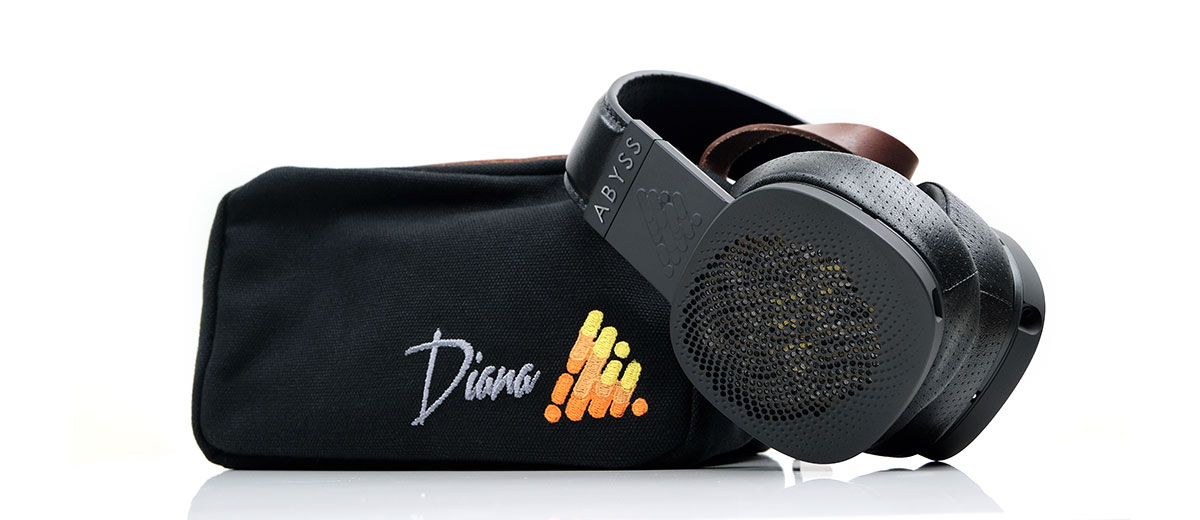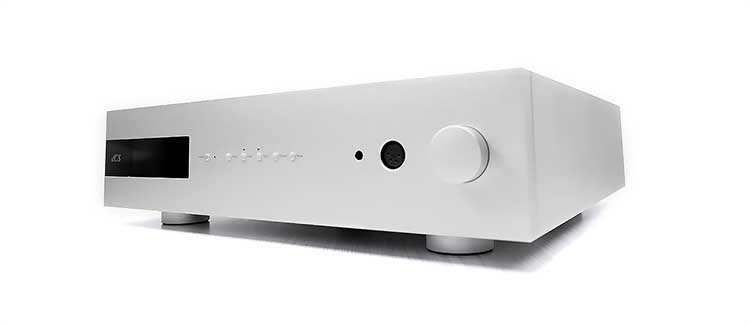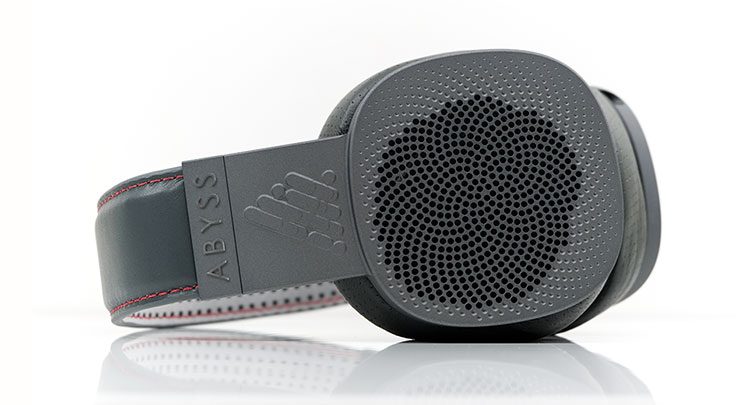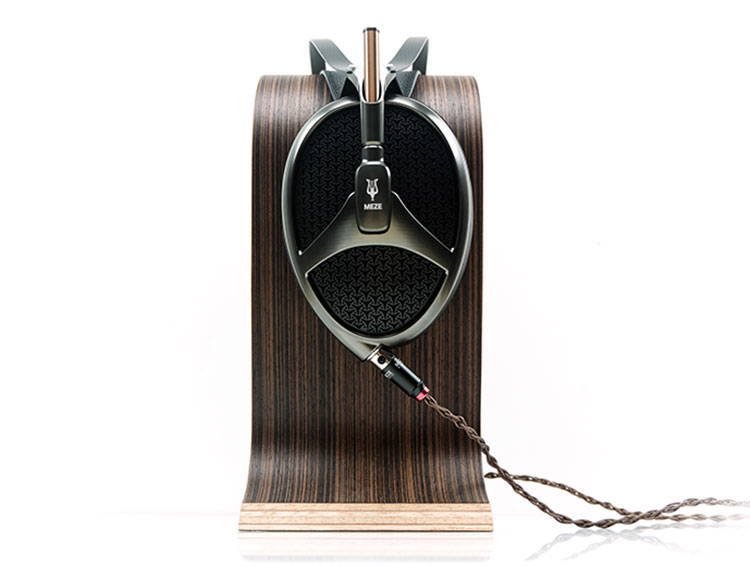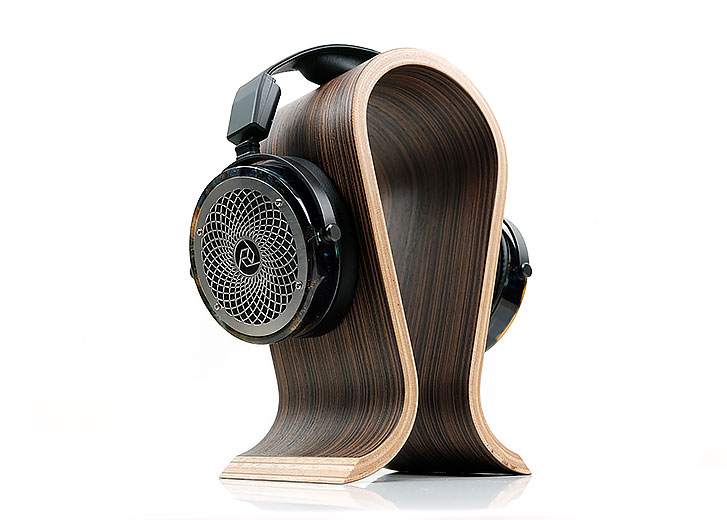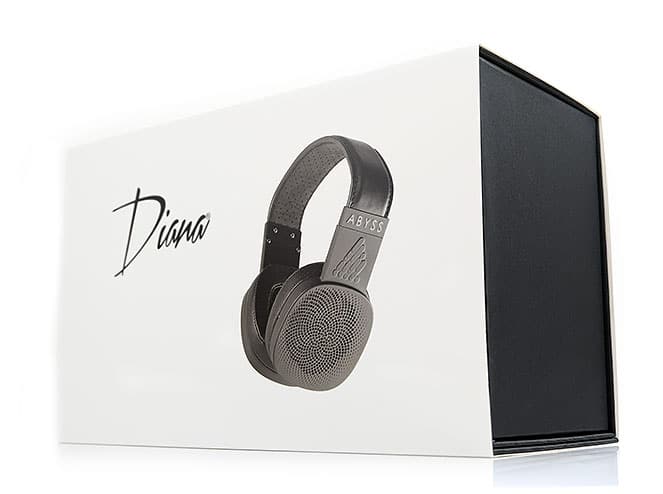Diana V2 Sound Impressions
Summary
Whilst I will speak about the differences to the Phi I do think the Diana v2 is a headphone that can and should stand out in its own right. Abyss has tuned this fairly differently and it is a performance that I think is quite versatile.
At a snapshot, the Diana V2 is just a shade behind in terms of technical capability to the Phi though that is not what is going to grab your attention from the outset.
Instead, it is the tuning and the timbre. The Diana V2 lops off a little bit of the Phi’s treble brilliance or energy from the top-end and amplifies or gives more deference to a weightier and warmer low-end.
The resulting presentation has a fairly smooth sound with a slightly rounded but very natural tone to vocal and instrumental notes. It is not as aggressive or reference-like as the phi, particularly in the mids and treble which in turn gives it a more forgiving personality.
That is not forgiving as in meaning lush or veiled. The Diana V2 still retains that Abyss trait for a lightning-fast transient response and top-notch articulation. Even compared to flagship headphones from Rosson Audio Design and Meze, the Diana V2 is a ‘fast’ headphone with unbelievable instrumental separation, width, and clarity.
Can you call the Diana V2 the Phi for the cautious? Perhaps, it does have a bit more synergy flexibility due to this smoother tuning and sounds excellent on some portable solutions. However, it is still a demanding headphone and one that, despite its diminutive size, has all the demands of a full-size planar that can scale wonderfully well with desktop solutions.
Staging
Despite the smoother tone, the staging complexity is still brilliant. It has a slightly more planted low-end but still relatively light in density and power compared to headphones such as the Empyrean and the RAD-0 from Rosson Audio Design.
Instead, the Diana V2 excels at control. The layering and complexity therein are just fantastic on the Diana V2 low-end giving you a very clear line of sight right down to 20Hz. Every thud, every beat, both rise, and fall, are executed with sublime precision.
The additional warmth helps beef it up a bit more compared to the Phi’s linear low-end so I would not be surprised if you get more joy from the Diana V2 staging from modern R’n’B recordings that place a bit more emphasis on texture low-end mixing.
Mids and treble are a little further back compared to the Phi and that does leap out at you when you compare them side by side. It still has incredible width but a shade less vivid in delivering those spatial cues.
I did find that the V2 is fairly transparent and true to the performance of your source for imaging. For example, the DX200 MAX dropped the low-end power a little with a vocal presence further forward. However, on the dCS Bartok, the vocal position sounded more reference in its positioning.
Timbre
The timbre is wonderfully natural sounding on the Diana V2. The overall timbre is richer and relatively forgiving compared to the crisp and peppy treble tour de force of the Phi. Studied matching with sources will pose less of a challenge with the Diana V2.
To achieve this Abyss has attenuated the V2 treble just a little and pulled back its upper mids to match to dull down any potential odd-harmonic nasties. At the same time, the midbass and sub-bass FR has a bit of a bump throwing in some additional body and warmth into the mids to up the even-harmonic bias.
That amplitude and presence drop in the Diana V2 upper mids and treble means instruments such as percussion have a relatively even-harmonic lilt rather than fizz about energetically with bite.
As a result, instrumental and vocal timbre has a bit more of a rounded and denser tone to them with that additional warmth and body but a softer attack throughout. The clarity is still excellent and the detail in that texture very impressive indeed.
Synergy
Efficiency
To be honest, the Diana V2 isn’t going to differ from the Phi much in terms of voltage and current requirements. The SPL is the same at 91dB and on the dCS Bartok, it is about 6dB more efficient than the Susvara using the 6.35mm connector. That is compared to the Susvara in balanced output on high gain (+0dB) from the Bartok.
I can still get a satisfactory level of volume from both the 500mW Lotoo PAW Gold Touch so it is not unworkable from a decent portable source. On high gain, the PAW Gold Touch was running about 65-80 (min-Max) and slightly higher on the PAW 6000 which is rated lower at 300mW.
Using the iBasso DX220 MAX is more satisfying than the Lotoo DAPs with its 1.7W output capability offering more headroom and dynamic range though the timbre could do with a bit more density. I found a similar experience for the 800mW capable FiiO M15 which was also excellent for detail but lacking in punch.
Pairings
In contrast to the Phi, I feel the slightly smoother approach of the Diana V2 to pair with a wider range of sources or amps. However, like the Phi, the V2 is still really at home with a quality desktop solution.
iBasso DX220 MAX
This is a personal preference thing but I did prefer the Diana V2 with punchier or sweeter sounding amps given its more weighted low-end tuning compared to the Phi.
For example, I mentioned the DX220 MAX as lacking a little low-end weight. Again, this is a preference thing because I think the Diana V2/MAX pairing is very competent and perhaps the best of the ‘DAP’ solutions out there.
Though by no means lacking in dynamic range or detail it tended to drop the low-end power in deference to a more forward midrange vocal presence on the Diana V2. That tone lacked a little ‘meat’ compared to some of our preferred desktop solutions.
Xi Audio Formula S & Violectric V281
The Xi Audio Formula S is still the most intricate sounding of the previously tested amps for the Phi and certainly an airy more complex soundstage compared to the peppier Violectric V281 analog amp which we also threw into the Diana V2 pairing mix.
However, the V281 is a great match for modern pop and rock with its heavier low-end pairing very nicely with the Diana V2’s warmer bass tuning. This is a good pairing if you need the PRaT to shine.
The only drawback was how the V2 exposed that slightly drier top-end of the V281. It is still very smooth but not as sweet and balanced sounding as the Formula S tuning, perhaps a shade drier on the V281. Both amps were tested with the same Oppo Sonica DAC which is an ES9038PRO component unit with a very neutral and transparent signal.
dCS Bartok
Perhaps the best pairing was the dCS Bartok. This was like a combination of both the Formula S and the V281’s strengths with a huge jump in dynamic range, something I did not think possible outside of pairing with the Chord TTOBY from the phi review.
Granted, this is a big jump in price but well worth a demo just to see how well the Diana V2 can scale with a quality DAC and an excellent amp. You get that punch and power of the V281 but with additional dynamic range so it leaps out a bit more on the Diana V2 but at the same time you get that natural sweetness of the Formula S timbre.
More than that you get a bit more tonal density through the mids and treble leaving the Formula S sound a little light and wispy in comparison. This is probably one of the most complete headphone pairings I have heard to date outside of the Phi with the dCS Bartok, (no surprise there).
Select Comparisons
Abyss Headphones Diana Phi
$3995
Technical
The most important technical takeaway from these two is that they use different drivers despite both being a 63mm planar driver. The Phi uses the ultra-low mass AB-1266 Phi CC driver whereas the Diana V2’s driver is an optimized original Diana driver and a little weightier with a slightly thicker diaphragm.
The specs also differ due to that thickness and weight with a slightly higher level of resistance of 42Ω from the Diana V2 compared to the lower impedance of 32Ω from the Diana Phi. The SPL between both is unchanged at 91dB/mW each.
Design
Virtually the same which is a good thing. That also means that both will be using the new slightly softer pads that this Diana V2 came with. The older slightly stiffer pads from our older Phi sample are no longer available.
There is a minor bit of weight difference with the Diana V2 measured at 330g officially compared to 350g of the Diana Phi and you do also get some different color choices. The Diana v2 is currently available in Black Onyx and Coffee whereas the Phi can be bought in Titanium Grey and Dark Bronze. The same we have is the Titanium Grey.
The new pads do offer a more comfortable fitting experience for both headphones. The older phi pads delivered more vertical pressure and the stiffer corners bit into my head a bit more than the new pads do.
Cable choices have minor differences at check out. Both headphones have 3.5mm TRS, 2.5mm TRRS, 4.4mm, and 4-pin XLR cable options at 1.5m and 2m. However, only the phi offers longer lengths at 3m and 5m as well as a 6.35mm unbalanced jack option.
Performance
The difference in tuning between the Diana V2 and Phi sort of reminds me of moving from a Sabre DAC to an AKM DAC at a very crude level. The Diana V2 is more forgiving and weightier on the low-end. Timbre is a shade richer, smoother, and more even-harmonic biased. This is the AKM with a planted fuller sound and stronger bass fundamentals.
The Phi is the Sabre. It is cleaner, more neutral but with a higher degree of separation and perceived pace to its transient response. It is also the more resolving of the two headphones. The mids are more vivid and the treble is peppier and more extended sounding. The Phi might be the tougher one to pair for synergy but probably the more rewarding experience if you have the right setup.
The Diana V2 comes across as more flexible for synergy with amps. It has a signature that gels with both portable neutral well-powered DAPs as well as natural sounding beasts such as the dCS Bartok.
The Diana V2 delivers on a non-fatiguing yet very resolving sound signature whereas the Phi is for accuracy and articulation at the highest level.
Meze Empyrean
$2995
Technical
The Empyrean is fabulously boutique much like the Diana V2, but an entirely different visual aesthetic. One is exotic, grandiose, and almost Persian in styling. The other is 70’s retro, funky and metropolitan in looks though with a similar dark hue if you order the black onyx.
Both are full size open-back circumaural headphones but the Empyrean is much bigger and uses an isodynamic hybrid array planar from Rinaro whereas Abyss design uses their own 63mm drivers optimized from the original Diana. The Diana V2 is also the more compact of the two, a little lighter, and gives off a definite if deceiving, portable headphone vibe.
Despite the additional 60g, the Empyrean is the slightly comfier of the two primarily due to those very thick leather or velour pads and the pre-formed or curved headband strap. The pressure distribution does an amazing job dissipating the weight of the Empyrean.
The Diana V2 has improved comfort over the Phi from 2019 with the new pads but the thin headband padding pressure spot on your head is still a little less flexible compared to that Meze headband strap.
Cables
Both are dual entry cable headphones with the Empyrean using a mini-XLR exit system and the Diana a 2.5mm dual-mono variant.
These two choices are universal, however, the Empyrean has a small edge for connectors due to the narrow opening on the 2.5mm jacks on the Abyss. That can limit your 3rd-party cable connector choices as some barrels can be too thick to insert properly.
Both have good quality copper stock cables but I like the finish and the lack of microphonics on the Abyss stock cables a little better.
Performance
Like the Phi, the Diana V2 creates a very contrasting presentation to the Empyrean with both excelling in some key areas. They can complement each other rather than competing based on their tonal differences much like the Phi comparison.
The Meze sound is more of a relaxing presentation with a richer timbre, a more forward smooth and beguiling vocal presence, and with a low-end that delivers a lot more body and power albeit at a more languid pace.
The Diana V2 opts for something that is lighter in timbre to my ear but with a pacier level of articulation and excellent instrumental clarity. You will not get the same level of weight or warmth on the low-end as the Meze but will get a lot more treble extension and a more open midrange on the Diana V2.
The V2 does have a little bump for vocal presence but compared to the Empyrean it is not as pronounced. The Empyrean midrange bump also extends from 2-4k whereas the V2 is much more neutral in this region until you hit 4-5k.
The Empyrean is tuned a little darker than the Diana V2 in terms of treble presence. Despite the V2 having a smoother treble response than the Phi it still has a bit more energy and bite compared to the Empyrean.
Staging differences between these two headphones is very different. The Empyrean has a closer low-end presence with a forward an intimate vocals. Treble leans back creating a little less space and a thicker intimate ambiance to its presentation. The V2 is wider, cleaner, and airier with an ethereal delivery heavy on big atmospherics for such a small headphone.
Rosson Audio Design RAD-0
$2600
Technical
The RAD-0 has more of a classic planar headphone form factor but equally as boutique as Abyss with that punkish dye element to the headphone aesthetic.
The RAD-0 uses an open-back circumaural 66mm planar magnetic driver design with a proprietary array of 11 N52 magnets in a dual-sided configuration. That is a little bigger than the Abyss Diana by 3mm but with a much bigger traditional rounded cup baffle and enclosure.
In fact, the whole RAD-0 design is just that bit bigger with almost double the weight at up to 615g compared to 350g. Some of those unique designs are lighter at around 550g but that’s still a fair jump up compared to the Diana V2.
You will feel that on your head though to be fair Rosson Audio Design has done an excellent job with the balance, thicker wedged pads, and a foam headband design. The Diana V2 is still the comfier of the two headphones by some distance for long listening sessions.
A shout out to the excellent weather-sealed travel case for the RAD-9 which is just excellent. The Diana V2 is much more svelte in its little man bag making it more portable but I do love that durable protection offered by the Rosson case.
Performance
The RAD-0 is a lot easier to drive at 29Ω and 98dB SPL compared to the Diana V2’s 42Ω/91dB SPL rating. Heavy-duty amps are not such as pressing need and I would group the RAD-0 into the Empyrean/Final D8000 range of easy to drive.
That means quality transportable sources such as the 1.7W 32-ohm rating of the iBasso DX220 MAX and FiiO’s M15 800mW 32Ω balanced load should have no issue with the RAD-0 on a technical level. I would say the MAX is fine with the Diana V2 but moving to the Xi Audio Formula S or even the dCS Bartok’s additional power is going to give you an optimal level of performance.
The MAX is a clean reference type of signature and my personal preference with the Diana V2 is something a little meatier and richer in timbre. The Bartok pairing will give you a very resolving but natural performance with excellent headroom which is more to my preference. Both headphones sounded wonderful with the Bartok but budgets may not stretch that far.
The Formula S is cheaper also delivers excellent dynamic range, a sweet timbre, and plenty of air with the Diana V2 and a good DAC source. However, with the Rad-0 you lose a little bit of low-end weight as it is a more linear sounding amp.
The Diana V2 excels with the additional space and headroom but with the Rad-0 I need a bit more ‘drive’ on the low-end. The Cavalli designed Monoprice Liquid Platinum amp is a better fit with its high-impact analog tone even if the staging is more intimate.
Tuning
The RAD-0 is warmer, closer, and the more planted of the two headphones. It has a musical lilt with a slightly analog vibe or a sweetness to its timbre. The Diana V2 is neutral-sounding though not overly dry or bright. In comparison it still has more of an ethereal overtone making it a more articulate performer on a technical level but not as dense sounding as the RAD-0.
The RAD-o has that Audeze-like lower-mids presence that does wonderfully well with lower-pitched instruments and really delivers an excellent fundamental. Lower-mids instrumental tones, around 500hz-1kHz instruments on the RAD-o also have a very satisfying density from that excellent pure planar bass performance.
The Diana V2 does not have the same quantity on the low-end as the RAD-0 but it has better clarity right down to 20Hz. If you need that additional PRaT then the RAD-0 has the advantage in terms of sustain and warmth but if you want precision and complexity then the Diana V2 delivers.
Our Verdict
This is a crafty special little headphone. It is so small and beautifully made you can hang it around your neck to take it with you on your travels and no one would realize just how brilliant a performer it is.
I guarantee you if you bring this with a decent transportable source to a meet you will surprise the heck out of anyone there who has not heard something like the Diana V2 before. It is a huge sound from a not so huge headphone and one that will absolutely murder less portable headphones out there unless its name is Diana Phi.
The lower price will also tempt those thinking about the competition, the Empyreans, and RAD-0 or the Final D8000’s of this world which have a similar price. It belongs there but it also brings its unique qualities to the table. Qualities such as a blazing level of articulation, outstanding staging complexity, and very smooth yet clear tuning. A very addictive performer indeed.
Diana V2 Specifications
- Weight 330g
- 63mm patented planar magnetic driver
- Impedance 42 ohms
- Sensitivity 91 dB/mW
- Frequency response 7 Hz – 28 kHz
- Includes cable by JPS Labs, length 1.5 meter/5 FT, with choice of 3.5 mm, 2.5 mm balanced, 4 pin XLR, or 4.4 mm balanced plug (Additional cables may be purchased separately).
- Large 63 mm patented planar speakers deliver stunning sound

